Otitis media of the middle ear is an acute infectious disease, manifested by specific symptoms. The disease must be treated, as it is dangerous for the development of complications. Not a single person is safe from the disease, therefore it is necessary to be able to recognize on time otitis media, the symptoms and treatment of which depend on the form of inflammation.
Material Content:
Otitis media: causes and manifestations of the disease
The disease refers to infectious diseases and proceeds in the form of acute or chronic inflammation. Pathology develops as a result of the ingress of pathogenic microorganisms into the Eustachian tubes, and from there into the middle ear.
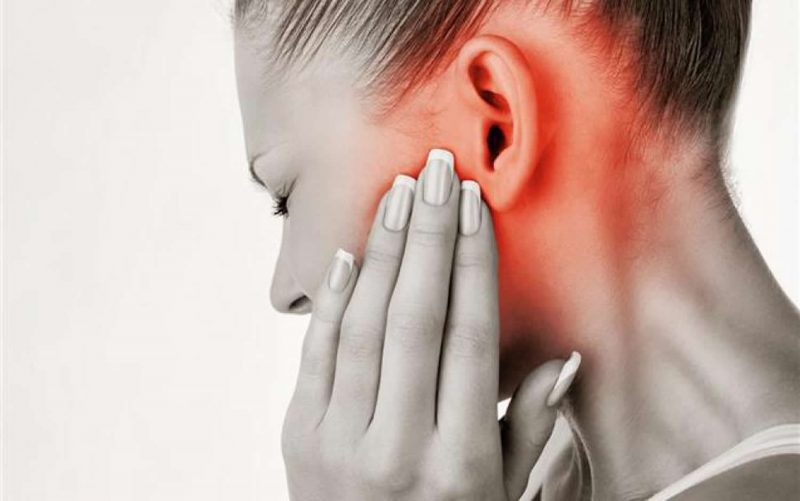
Causes:
- infection of the ear with bacteria or viruses;
- complication after flu or SARS;
- inflammation of the nasopharynx;
- sinusitis;
- mechanical damage to the ear.
Otitis is considered rather a childhood disease, as it is rare among adults. In children, this disease most often acts as a result of too narrow an Eustachian tube. Any inflammation in the nasopharynx or rhinopharyngitis leads to the spread of infection through the Eustachian tube into the ear.
In adults, otitis media in the vast majority of cases develops against the background of a general decrease in immunity. The disease often acts as a complication of inadequate treatment of infectious and viral diseases, including sinusitis.
The risk group includes adults with chronic sinusitis, patients with immunodeficiency and patients with diabetes.
Middle ear disease is accompanied by severe symptoms and requires timely treatment.
Symptoms and signs of the disease
Otitis media refers to inflammatory diseases with an acute onset and a rapid increase in symptoms.
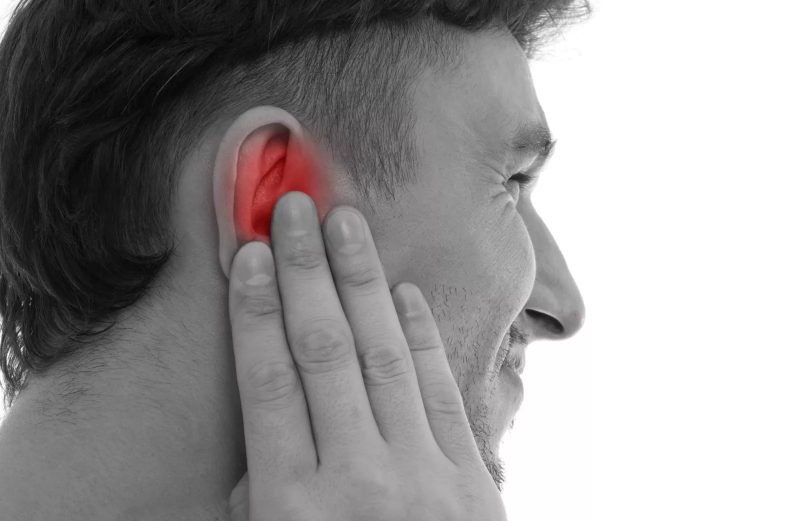
Classic clinical picture:
- fever and fever;
- acute “shooting” pain in the ear;
- hearing loss, feeling of stuffiness;
- discharge from the external auditory meatus.
Usually, with otitis media, nasal congestion and inflammation of the nasopharynx are observed. This is due to the structural features of ENT organs, whose work is closely interconnected. Otitis may be a consequence of inflammation of the maxillary sinuses or rhinopharyngitis, but if it is an independent disease, it necessarily entails a general deterioration in well-being and the spread of the pathological process to adjacent organs.
Types and stages of otitis media
There are two forms of otitis media - acute and chronic. Against the background of the inflammatory process, exudate accumulates. By the type of this fluid, otitis media is divided into purulent and catarrhal.
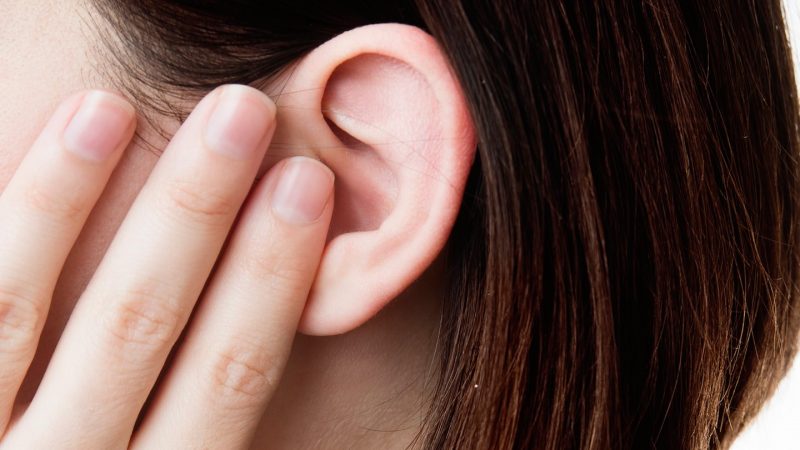
In the vast majority of cases, cocci (staphylococcus, pneumococcus) and other conditionally pathogenic microorganisms become the cause of ear inflammation. Their activation is due to a decrease in immune defense, or proceeds against the background of severe inflammatory processes of the nasopharynx. The causes of the development of the disease with acute and chronic course are the same, only the severity of symptoms differs.
Acute otitis media
The acute inflammatory process of the middle ear is characterized by a rapid increase in body temperature and pain. The main signs of the disease are severe pain and high body temperature. The surrounding tissue may be involved in the pathological process, which leads to the spread of pain throughout the affected part of the head.
A characteristic feature of acute inflammation is a sharp excruciating pain, the so-called "backache". After some time, the inflammatory process resolves, the pain subsides, and purulent fluid oozes from the ear canal.

Acute otitis media occurs in 3 stages or stages:
- Stage 1: acute eustachitis;
- Stage 2: acute catarrhal inflammation;
- Stage 3: acute purulent inflammation.
Acute eustachitis is accompanied by tinnitus, a sensation of pulsation and congestion, a slight increase in temperature (up to 37-37.4). This stage lasts up to several days, and then goes into acute catarrhal inflammation, which is accompanied by severe pain and fever to subfebrile values. At the same time, aseptic inflammation of the middle ear, loud noise and throbbing in the ears, marked congestion, accompanied by hearing impairment, are noted.
Acute purulent inflammation is the next stage of the disease. This is accompanied by severe pain that radiates to the teeth, lower jaw, eyes and temporal region. The pain intensifies when swallowing and when you try to blow your nose to clear your nose. Body temperature rises to 39-400 C. After some time, perforation of the tympanic membrane occurs, a wound is formed, through which pus flows. At this stage, symptoms subside.
Acute purulent inflammation will be accompanied by pain until the discharge is found. If this does not happen for a long time, the otolaryngologist makes a puncture through which purulent masses are removed.
After a complete cleansing of the inflamed cavity and removal of purulent contents to the outside, perforation is gradually delayed, the disease completely disappears.
Chronic otitis media
Chronic otitis media is a consequence of inadequate treatment of acute inflammation. It develops in two cases: with frequent relapses of acute inflammation with the formation of perforation and excretion of the discharge to the outside, or as a result of the absence of treatment for acute inflammation.
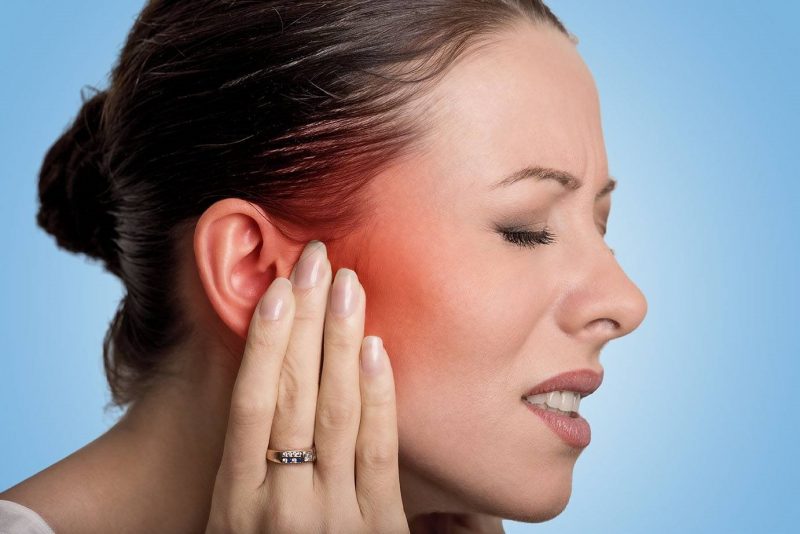
Each time, when the tympanic membrane is torn to remove purulent contents from the middle ear to the outside, a small perforation is formed. Over time, it is delayed, but a scar appears in its place. In case of chronic otitis media, these scars become inflamed or do not heal completely due to a small amount of residual purulent masses in the perforation.
As a rule, the acute form of the disease does not cause pathological hearing impairment. Ear congestion and hearing loss are a temporary symptom that disappears after restoration of the integrity of the eardrum. Chronic otitis media can lead to irreversible hearing loss, but we are talking about weakening, but not a complete loss of hearing ability.
Diagnostic measures

There are no problems with the diagnosis. It is enough for an experienced doctor to interview the patient and examine the ears with an endoscope and an otoscope to suspect the cause of the ailment. To confirm the presence of purulent inflammation, radiography of the temporal bone or computed tomography is prescribed.
Treatment of otitis media in adults at home
Otitis should be treated on an outpatient basis. The treatment regimen depends on the form and stage of inflammation. In the absence of purulent discharge, the therapy is carried out by local means using ear drops. In the presence of an abscess, antibiotic therapy is prescribed. Alternative methods of treatment also take place, but they are recommended to be used as an auxiliary, and not the main therapeutic agent.

Chronic otitis media requires complex therapy, self-medication in this case is unacceptable. Inadequate therapy is dangerous for the development of hearing loss.
The most effective drops for otitis media
For treatment, antiseptic agents and antibacterial drugs in the form of drops are used.
It is interesting:ear drops with nasal congestion
Popular medicines:
- Sofradex;
- Cypromed;
- Otipax;
- Normax

Sofradex is a combination drug based on a corticosteroid and antimicrobial agent. Ear drops are effective at the initial stage of the disease, before pus begins to accumulate in the middle ear. The tool is used for 2-3 drops up to four times a day. The course of treatment on average takes 4-5 days.
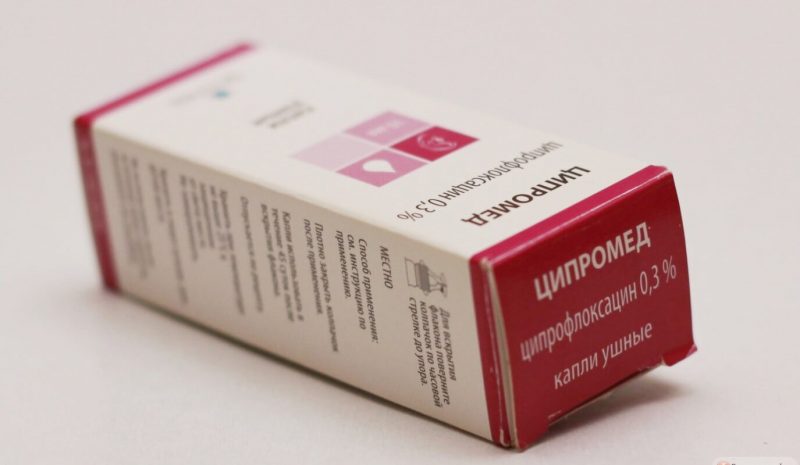
Cypromed drops contain fluoroquinolone ciprofloxacin. This is a broad-spectrum antimicrobial agent that quickly relieves inflammation caused by opportunistic microorganisms. The drug is used in ophthalmic and otolaryngological practice. Drops are used up to 3 times a day, 1 drop in each ear.
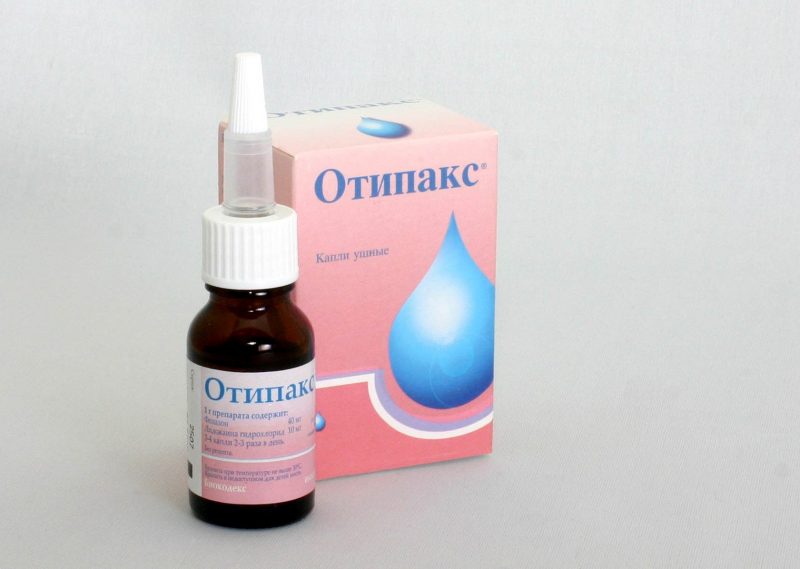
Otipax is an analgesic and anti-inflammatory agent. The drug contains phenazone and lidocaine. Drops are used for acute otitis media to reduce pain. With severe suppuration, the drug is combined with antibiotics. The tool can be used 4 drops 4 times a day.
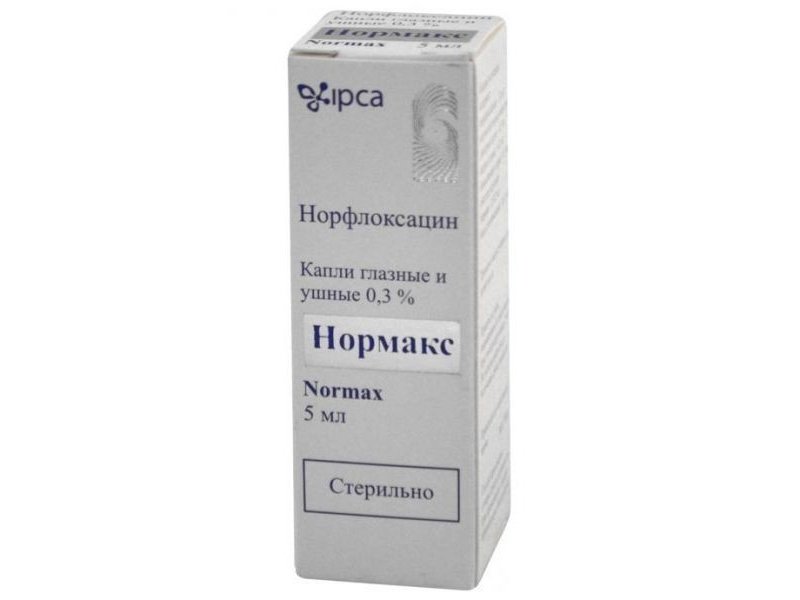
Normax is an effective antimicrobial agent based on norfloxacin fluoroquinolone. This drug has a broad antimicrobial activity and rapid action. It is used 5 drops three times a day for 4-5 days.
Antibiotics for otitis media in adults
For otitis media, antibacterial drugs of a wide spectrum of action are used. The combination of ear drops with antibiotics in tablets helps to minimize the risks of complications and the transition of the disease into a chronic form.
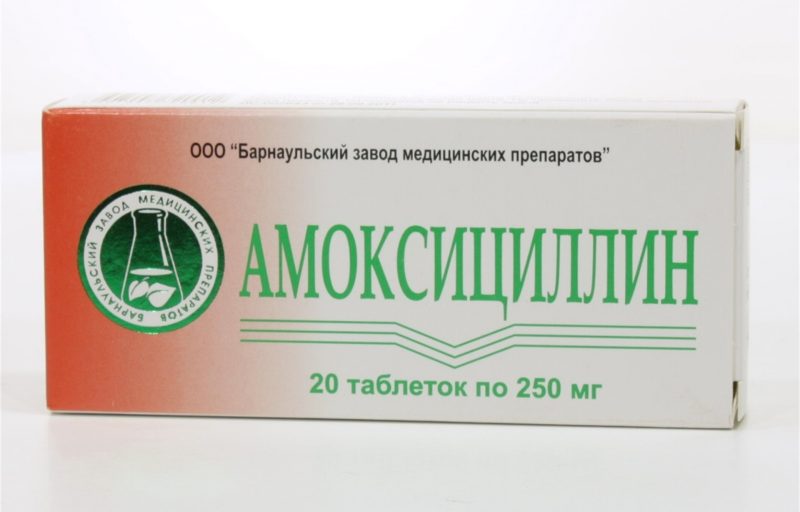
Most often prescribed drugs of the following groups:
- penicillins (Amoxicillin, Amoxiclav, Augmentin);
- fluoroquinolones (Cypromed, Norfloxacin)
- cephalosporins (ceftriaxone)
- macrolides (Sumamed, Azithromycin).
First-line drugs are penicillins. Amoxicillin, Amoxiclav or Augmentin is prescribed. Fluoroquinolones are broad-spectrum antimicrobial agents used for intolerance or inefficiency of penicillins. Cephalosporins or macrolides are also prescribed as substitutes for penicillin intolerance.
The dosage and duration of the course of antibiotic treatment is selected individually for each patient.
Treatment with folk remedies
Alternative treatment of otitis media is an extremely dubious event that can not replace conservative drug therapy. Such methods can be used as additional, but only after consulting a doctor. It is important to remember that improper treatment of otitis media can lead to hearing loss.
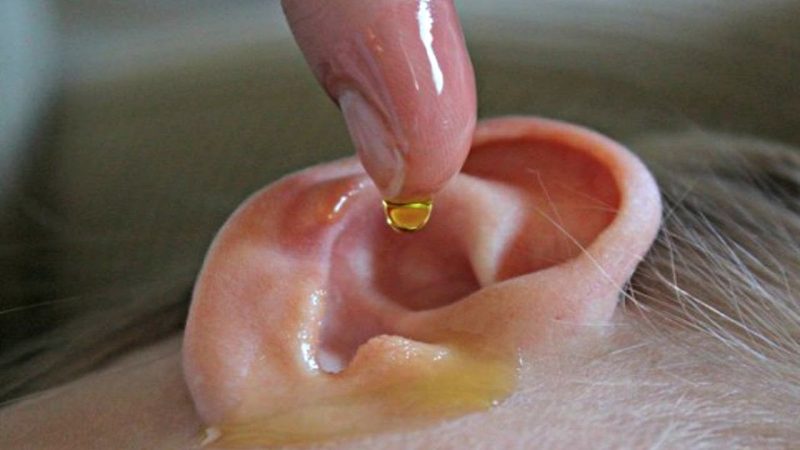
- Mix in equal proportions Dimexidum and a solution of boric acid, apply to cotton and place it in your ears for an hour. Repeat this manipulation three times a day.
- Place 5 large bay leaves in a bowl, pour a glass of hot water and boil for 20 minutes. Then cover, wrap with a towel and leave for another two hours to insist. The drug is taken a tablespoon three times a day, while instilling 2-3 drops in the inflamed ear.
- When a tympanic membrane breaks and pus is released, hydrogen peroxide is used, which is instilled with a pipette, or used in the form of an ear turunda. This helps to quickly clear the ear canal of purulent contents and avoid the transition of acute otitis media into a chronic disease.
The only folk method used in modern medicine is hydrogen peroxide. The remedy has a number of limitations, and in rare cases it can provoke the development of complications, but it really effectively cleanses pus and prevents its re-accumulation. However, it is recommended that you consult a doctor before using peroxide.
Possible complications of the disease
Despite the frightening symptoms, acute otitis media practically does not lead to hearing loss if it is treated correctly and in a timely manner.

Complications are characteristic of an advanced chronic form of the disease and are manifested:
- inflammation of the meninges (meningoencephalitis);
- damage to the facial nerve;
- sepsis, when purulent masses enter the general bloodstream;
- hearing loss.
Timely detected otitis media is quite successfully treatable. As a rule, treatment of otitis media takes about one week. Pain and discomfort disappear on the second day after the start of drug therapy.
Prevention of otitis media
Otitis in adults is often a consequence of problems with nasal breathing. This may be due to chronic inflammation of the maxillary sinuses or curvature of the nasal septum. Otitis can be prevented only by timely treatment of these disorders.
It is also important to prevent weakening of the immune system and timely treat any viral and infectious diseases.












